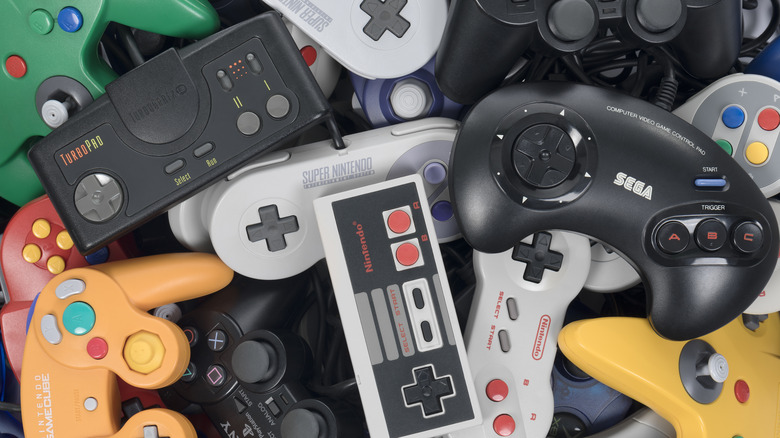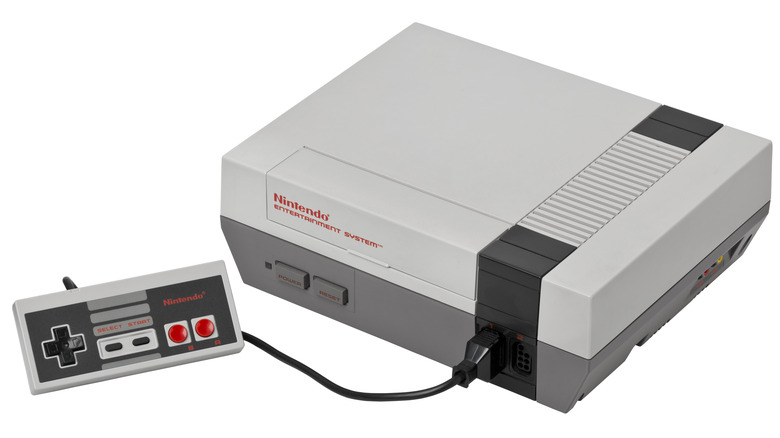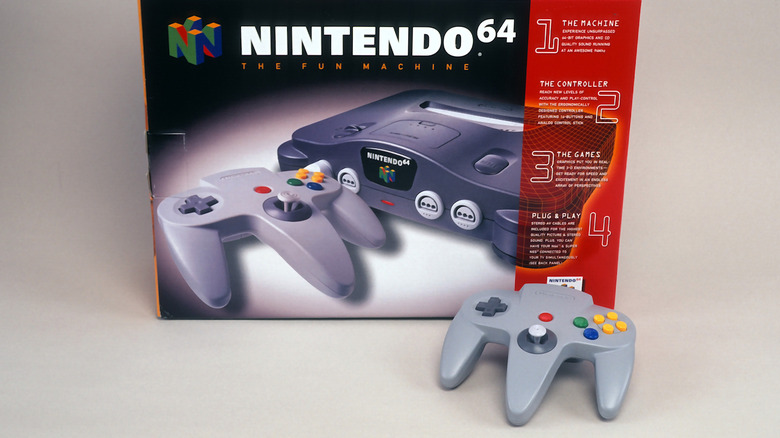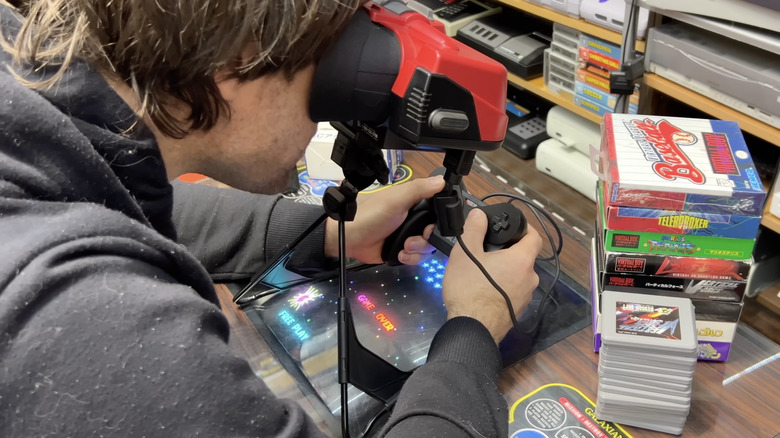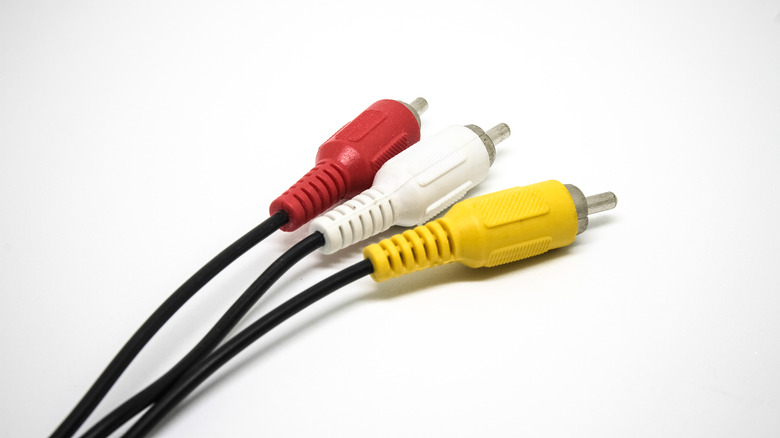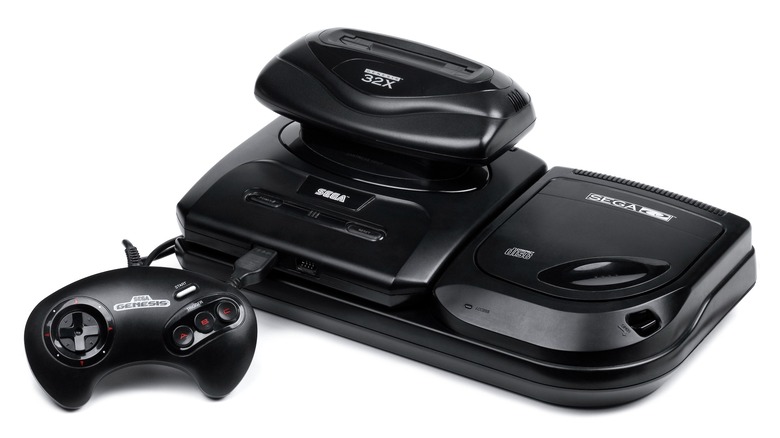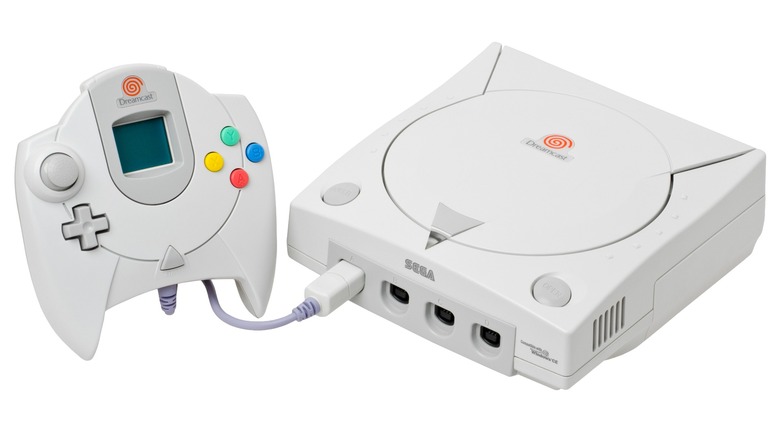6 Things You Should Know Before Buying A Used Classic Gaming Console
We may receive a commission on purchases made from links.
Classic gaming is as popular as ever. Not only is it easy to play many old favorites through console makers' subscription services, but there's plenty of interest in using the original hardware, as well. This draws a lot of gamers to go back to old cartridges and discs, or to newer flash carts that let them load up numerous games on an SD card. However, while classic hardware is always going to give you the most authentic experience, it doesn't always amount to the best experience.
Some consoles had serious hardware defects, like the classic Nintendo Entertainment System design causing issues in the connection between the console and the game cartridge. Some had bad designs that didn't necessarily impact the basic functioning of the console, like the poor ergonomics of the Nintendo Virtual Boy or the Nintendo 64 controllers' consistently deteriorating analog sticks. And many only output composite video, an analog format that many modern TVs don't accept anymore, requiring aftermarket solutions to get older consoles to work on HDMI-only TVs. All told, there are a lot of things you should be aware of before shopping for vintage consoles, so let's look at some of the most important ones in detail.
Avoid unmodified 'toaster' NES consoles
If you were playing video games when the Nintendo Entertainment System was still on top of the world, then you surely remember just how high maintenance owning the console was compared to most of Nintendo and its competitors' subsequent efforts. Games not booting while the console's power light blinked was a frustratingly common occurrence, to the point that there were both official and unofficial cleaning kits for the cartridges and the console itself.
The cause was a faulty connection between the cartridge and the console's "Zero Insertion Force" 72-pin connector. It made it very easy to insert and remove cartridges, but the connector didn't have the effect of scrubbing off excess debris the way top-loading consoles did. It could also lead to bent connectors. The 72-pin connector was there in the first place because, after the American video game market crash of 1983, Nintendo wanted the NES to look less like a game console while also making it harder for American children to touch essential hardware.
So, if you want to play NES games on original hardware, legitimate original hardware isn't a great idea. You could get a NES modified with a replacement connector or even an improved version like the Ninten-Drawer. There's also the option of buying 1993's NES 2, which used the more convention top-loading cartridge slot. Even that has its detractors in un-modded form, though, as the only video output is an RF modulator, with no option for composite video.
The Nintendo 64 analog stick was a bit delicate
These days, video game controllers have taken on a pretty standardized shape and button layout. That took decades, though, with Nintendo at the forefront of key changes. The NES replaced joysticks with the since-standard d-pad, the Super NES added shoulder buttons and the now-standard baseball diamond-shaped face button layout, and the Nintendo 64 added both an analog joystick and handles for better holding the controller. The analog stick was vital for precision movement in new 3D games like "Super Mario 64" and "Pilotwings 64," but as the first of its kind, it had some flaws, particularly that it's physically the weak point of the N64 controller.
With heavy use, the analog stick can become loose, thanks in large part to a poor design that caused plastic parts to grind against each other to the point of shaving each other down. When buying an N64 and N64 controllers, determining the condition of the analog stick is as important as anything. Alternatively, you could also invest in a third-party controller that had a better implementation of the analog stick design. Personally, when the analog stick of the controller that came with my launch day console started drifting after a few months, I got it replaced under the warranty, but with how fragile it seemed, I didn't trust the replacement. Magazine reviews pointed me to the original InterAct SharkPad Pro and I was thrilled with the better build quality, most notably via an analog stick with a reinforced metal shaft.
The authentic Virtual Boy experience is incredibly uncomfortable
Plenty of consoles have flopped over the years, but one flop that stands out above most of the rest is the Virtual Boy, which flopped despite being a Nintendo product, Mario games and all. Released in 1995, it was Nintendo's attempt at, as the name suggests, delivering something resembling a virtual reality system at home. In practice, it was a monochromatic display with some neat stereoscopic 3D effects but nothing amazing. It was also positioned oddly, as the "Virtual Boy" name and smaller cartridges suggested it was a follow-up to the Game Boy portable console, but it was too heavy to be portable.
If it was too unwieldy to carry around, it was certainly too heavy to strap to your head, which meant that it had to be used on a tabletop stand. This meant that using the Virtual Boy required leaning into the viewer at an awkward angle that commonly caused neck pain. I can personally attest to this: When the Virtual Boy was released, I rented it from the local Blockbuster Video store, and while the games had promise, the strain that using it on the dining room table put on my neck showed me it was something I would never want to own. To make matters worse, the Virtual Boy was known to cause eye strain and resultant headaches, to the point Nintendo built in a 15 minute auto-pause timer and advised kids under seven against using the console.
Many modern TVs need extra hardware to accept older consoles
Nowadays, hooking up a console to a TV or monitor is very straightforward. HDMI is the default connection type, combining audio, video, and sometimes other features like networking and cross-device control into a single digital cable. However, though HDMI is still relatively new, a lot of modern TVs don't have any other kind of inputs, which means that most older consoles need extra hardware to be used with TVs that only have HDMI inputs. For many classic consoles, only analog outputs are available, with the default being composite video and some consoles also offering higher-quality options like S-Video and RGB.
This means that if you want to use these older consoles on HDMI-only TVs, you need to get a hardware upscaler that can convert the composite signal to an HD signal that the upscaler can send digitally over HDMI. Ideally, you want to get one that's gaming-oriented, as well, because it will be designed to prioritize reduced lag over raw image quality. It doesn't seem like there's any clear consensus as to which upscalers are best, so you're probably best off diving into Reddit threads and Amazon reviews for recommendations.
The full Sega Genesis experience is a lot to swallow
There will never be another video game console quite like the Sega Genesis (the Mega Drive outside of North America). The 16-bit console has, since the end of its life, become defined by Sega' releasing multiple add-ons that were supposed to expand its functionality. This started with the Sega CD (Mega CD outside North America), which hit American stores in late 1992. On paper, a CD drive made sense at the time, as CD-ROM games were becoming a big deal on home computers, plus rival NEC released a CD-ROM add-on for its Tubrografx-16 console.
However, the Genesis wasn't powerful enough to harness the extra storage capacity for more than higher quality soundtracks and low-resolution video clips. Worse, Nintendo predicted this in 1992. "Even though you'll see CD-ROM accessories this year and next, it will take developers a few years to develop games of caliber and quality to warrant the purchase of the CD-ROM accessory for the 16-bit systems," then-Nintendo advertising and PR director Bill White told toy industry trade publication Playthings in May 1992. "I don't think you'll see it until 1994-95."
The other big add-on was the 32X in late 1994, which allowed the Genesis to play 32-bit cartridges and CDs...despite a full-fledged 32-bit console, the Saturn, dropping at the same time in Japan and several months later in the U.S. This was thanks to conflicts between Sega's American and Japanese divisions, and the 32X bombed as a result. If you're looking for the full Genesis experience, it'll mean acquiring all of its addons, for better or worse.
The Sega Dreamcast had a massive hole in its copy protection
Sega regrouped as the '90s went on, to the point that it kicked off the sixth console generation with the Dreamcast in 1999. This time, not only did Sega get ahead of the competition, but the launch was a massive success, moving 410,000 units for $132.7 million in revenue by the end of the first week. With a great launch lineup and commitments from the big names in third-party publishers, the Dreamcast seemed poised to be a massive long-term success. For various reasons, that ended up not being the case, but the console is beloved by its fans and carries a strong legacy. That legacy, though, includes the odd distinction of having its copy protection cracked to the point that most Dreamcasts can run bootleg games without any kind of console mods.
Thanks in part to its proprietary GD-ROM discs, you couldn't just copy Dreamcast games by ripping an ISO image using your computer, but some groups figured out how to dump the games via the console's serial port. That was just half the battle, though, as before long, these cracking groups figured out how to make CD-Rs of Dreamcast games boot on their own without any modifications to the hardware. This was fixed in revision 2 of the Dreamcast, but if you find an earlier version, it can play CD-Rs. Besides bootlegs, this is useful for using boot discs to get around the console's region lock.
